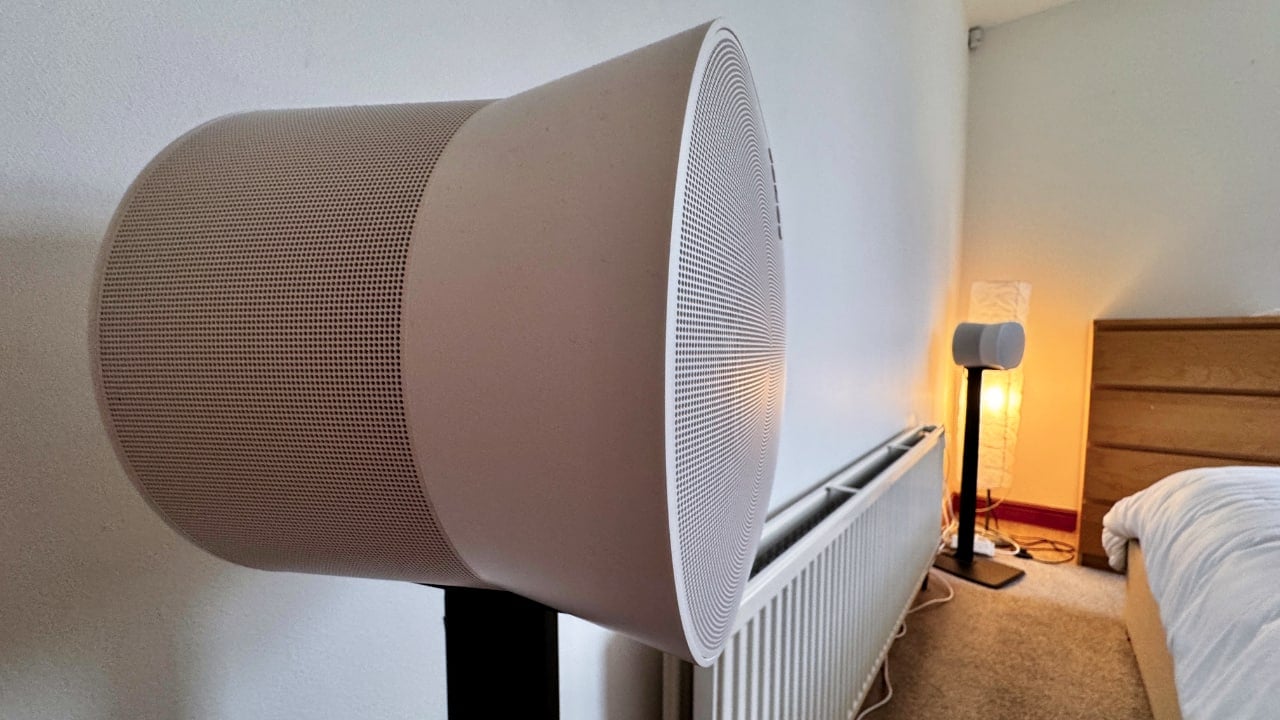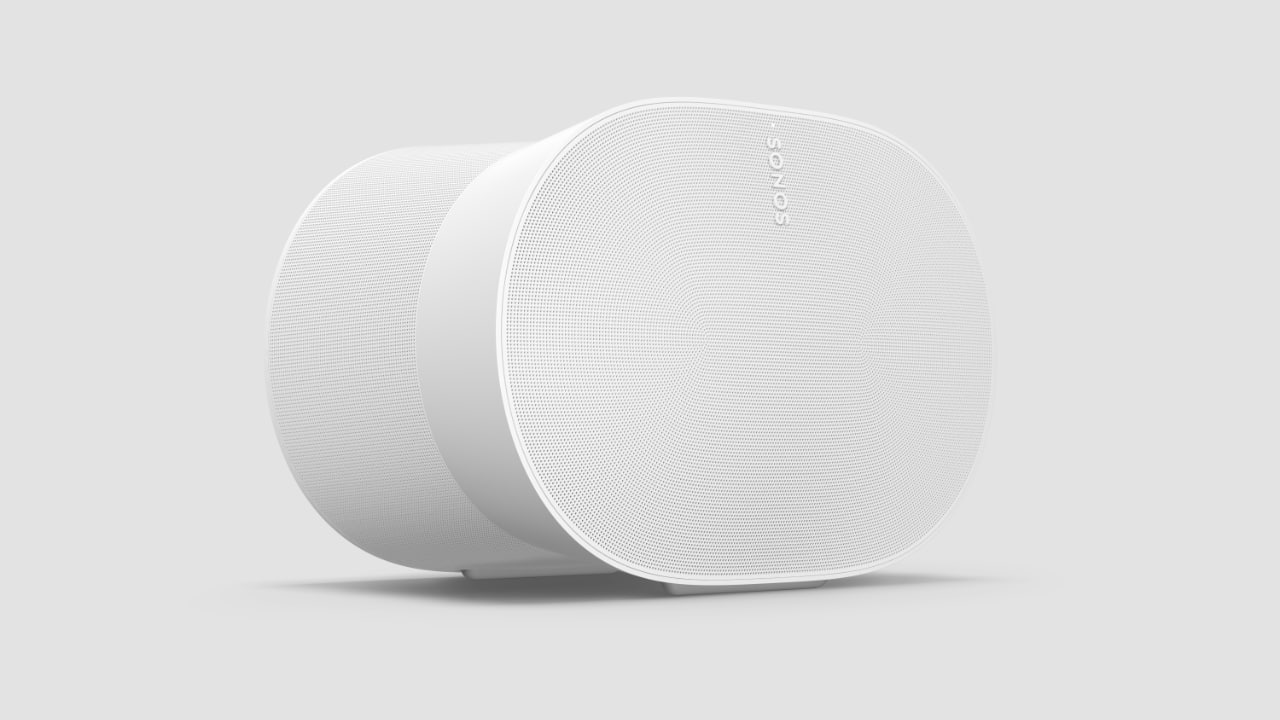
David Shapton liked the Sonos Era 300 speaker so much, he bought two of them! This is his experience of running them as a stereo pair.
My review of the Sonos Era 300 recently was one of the most-read articles of the year. I’m not surprised because there’s clearly a massive amount of interest in the unusual device. My conclusion was that it was “the best wireless loudspeaker I have heard”.
It is genuinely a technological marvel, packing six amplifiers, six loudspeaker drivers and some impressive digital processing into a device that’s barely the size of a shoebox, albeit a rather different shape.
And the reason for that slightly unusual form factor is that it is a Dolby Atmos speaker designed to throw sound all around you. It does this rather successfully, but for all that, its biggest talent is simply sounding good!
Just a note here that Audiophiles, those individuals who spent the sort of budgets that would comfortably buy an exotic sports car on their HiFi, probably won’t like the concept of an all-in-one speaker. Ultimately, if you want the absolute best, with pin-point stereo imaging and a frequency range from here to the moon and back, then you’re going to have to pay more than around £500 for an entire system. You’ll most likely have to spend even more on acoustic treatment to get to beyond the point where your listening room’s sound completely masks the “difference” your expensive stereo gives you. But apart from those esoteric high-end audio fans, the Era 300 is quite a revelation and easily good enough for almost all purposes, from filling a room with party playlists to lulling you to sleep at night.
But the thing is, why stick with just one of them? Why not buy two for a proper stereo pair? Except that, it’s much more than stereo, with its multi-channel audio talents.
Two’s company

One reason not to buy two is that they’re not exactly cheap. Sonos sells them at $449 each or $808 for the pair. But are they “value”? I think so. From my experience, you’d struggle to buy a complete stereo system of this quality for less than $1000; never mind one that has twelve amplifiers, twelve loudspeakers, and works wirelessly.
Don’t get me wrong: one Era 300 is impressive. It doesn’t sound like a point source. Instead, as I said in my earlier article, the audio seems to be from a “cloud” centred on the loudspeaker but not confined to it. With actual spatial audio, the results can be surprisingly good - but that depends on how well the track is mixed for Dolby Atmos. Some tracks are understated, and some go all-out to put a lead guitar out in front of you and a shaker somewhere near a painting on the right-hand living-room wall.
Just to manage your expectations, a single Era 300 isn’t going to sound like a full multi-speaker system. But what it does do is give you very high-quality sound that does seem, on occasions, to exist completely “out of the box”.
I did wonder whether it was a good idea to have two of the Sonos speakers. I couldn’t see how a spatial audio speaker is going to work as a stereo pair. But I needn’t have worried. The answer is “spectacularly well”.
Ironically, I’ve always preferred a really good stereo system to an all-singing, all-dancing, multi-channel one. Great stereo recordings can seem to have an almost 3D quality to them, and when you pair an outstanding recording with good room acoustics and a decent HiFi, the results can be impressive, with a dimensionality that is far greater than the modest number of speakers would suggest.
Easy set up
When my second Era 300 arrived, it was easy to set up. The Sonos software completely understands the concept of adding two speakers together to make a stereo pair. You merely tick the “make a stereo pair” option in the app, and it happens. That's no mean feat when you realise that each speaker has to receive the wireless audio with near-perfect timing to be able to reproduce with the sort of timing essential for sounding like a coordinated pair.
As soon as I finished the setup, it was clear that there was a massive improvement. I suspect that the software in each speaker has a quite different role when in stereo mode. Conventional tracks sounded fuller, with even more dynamic range and with a very wide stereo image. The “solidity” of the stereo was the same across all tracks, from Dub through Drum and Bass to Mahler’s second symphony. What all these tracks had in common was a demanding dynamic range - and quite a lot of bass.
With two of the speakers in Atmos mode, the sound comes close to surrounding you. Only the “rear” channels are unconvincing. I played some official Atmos demo tracks, and the results varied, but at least one of them was astonishingly “present” and all-enveloping. It also showed off the extraordinary dynamic range of these speakers.
My feeling after spending quite a bit of time with the stereo pair is that they are so good that I want to hear all kinds of music through them. While I don’t think the stereo image is pinpoint accurate, it is extremely engaging. Almost everything not only sounds good but almost as if it was meant to be heard like this. I don’t know if the onboard processing and the internal physical architecture of the speakers are what gives the music its floating realism, but whatever it is, it’s astonishingly good. Yes, they’re expensive, but they’re extraordinary value for the experience they create.
Tags: Audio Featured Adobe Audio


Comments